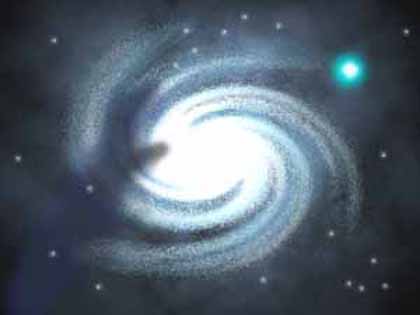

Blue Galaxies are small, distant galaxies, billions of light years away. We are therefore seeing them as they were when both they and the universe were quite young. You might think that, because the galaxies are so far away, their light would be so strongly red in appearance. Blue galaxies long ago were forming new stars, therefore most of their light was emitted in the blue and ultraviolet regions of the spectrum and appear that when when they are seen by us.
The faint blue galaxy (F.B.G.) problem in astrophysics first arose with observations starting in 1978 that there were more galaxies with a bolometric magnitude > 22 than then-current theory predicted. Galaxies can appear faint because they are small or because they are far away. Neither explanation, nor any combination, initially matched the observations. The distribution of these galaxies has since been found to be consistent with Cosmic inflation, measurements of the Cosmic Microwave Background, and a nonzero cosmological constant, that is, with the existence of the now-accepted dark energy. It thus serves as a confirmation of supernova observations requiring dark energy.
A second problem arose in 1988, with even deeper observations showing a much greater excess of faint galaxies. These are now interpreted as dwarf galaxies experiencing large bursts of stellar formation, resulting in blue light from young, massive stars. Thus F.B.G.s are extremely bright for their size and distance. Most F.B.G.s appear between red-shift 0.5 and 2. It is believed that they disappear as separate objects by merger with other galaxies. Read more ...